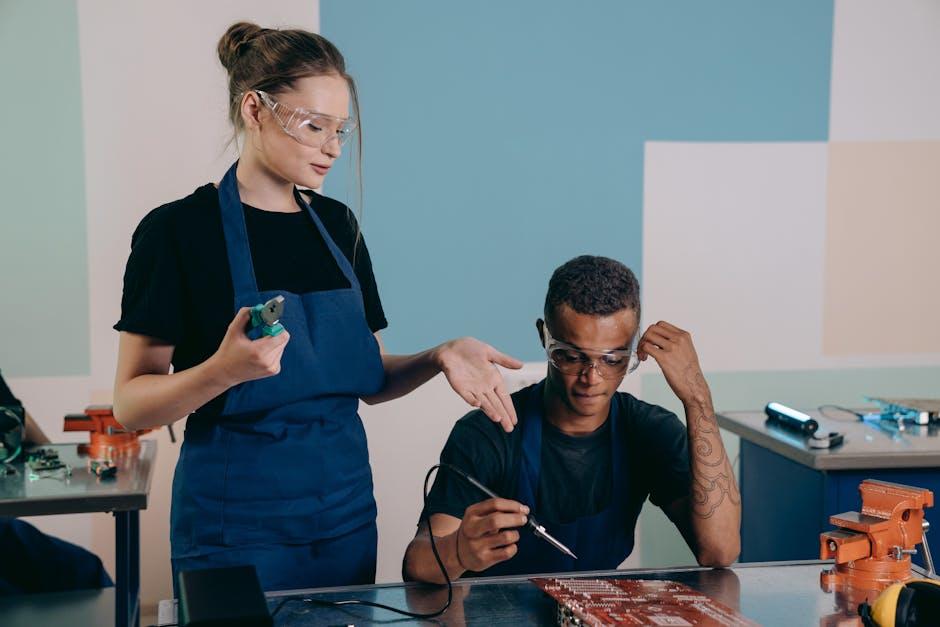Training a dog is often seen as a daunting task, reserved for professionals with years of experience and expertise. However, as many dog owners discover, the bond between a human and their canine companion can be enriched through the journey of training, even without professional help. This article aims to explore the possibilities and methods available to those who wish to embark on this rewarding path themselves. With patience, consistency, and a little guidance, you can transform your furry friend into a well-behaved member of the family. Whether you’re a first-time dog owner or a seasoned enthusiast, this guide will offer insights and tips to help you understand the essentials of training, emphasizing the joy and fulfillment it can bring to both you and your pet.
Understanding Your Dogs Unique Learning Style
Every dog is a unique individual with its own learning style, much like humans. Understanding your dog’s particular way of learning can make the training process more effective and enjoyable for both of you. Visual learners often benefit from demonstrations and hand signals. If your dog responds well to gestures, consider using clear visual cues alongside verbal commands. Auditory learners may be more attuned to the tone and pitch of your voice. For these dogs, varying your vocal cues and using distinct sounds can enhance comprehension.
Some dogs are kinesthetic learners, thriving when they can physically engage with their environment. These pups might excel with interactive training methods that involve movement and play. To identify your dog’s learning style, observe how they react to different types of stimuli and adjust your approach accordingly. Here are a few tips to tailor your training methods:
- Observe: Pay attention to what catches your dog’s attention most during training sessions.
- Experiment: Try different techniques to see which resonates best with your furry friend.
- Be patient: Every dog learns at their own pace; patience and consistency are key.

Creating a Consistent Training Routine at Home
Establishing a regular training schedule at home can be both rewarding and effective for your furry friend. Consistency is key when it comes to reinforcing behaviors and commands. Begin by setting aside dedicated time each day for training sessions, keeping them short—around 10 to 15 minutes—to maintain your dog’s interest and focus. Utilize a quiet space free from distractions, ensuring that your dog can concentrate fully on the task at hand.
- Patience and Positivity: Always approach training with patience. Celebrate small victories with treats, affection, or playtime, creating a positive association with learning.
- Clear Commands: Use clear and consistent verbal cues or hand signals. This helps your dog understand exactly what is expected.
- Routine Reinforcement: Practice new skills daily, integrating them into regular activities. This could be as simple as having your dog sit before meals or stay while you answer the door.
Remember, the goal is to create a structured environment that makes learning enjoyable and engaging for both you and your dog. By sticking to a routine, you’ll be able to track progress and adjust techniques as needed, all while strengthening the bond between you and your canine companion.

Essential Tools and Techniques for Effective DIY Training
Embarking on a DIY training journey with your dog can be both rewarding and challenging. To set yourself up for success, it’s crucial to have the right tools and techniques at your disposal. Here are some essentials that will make the process smoother and more enjoyable:
- Clicker Training: A clicker is a small, handheld device that makes a clicking sound. It’s a powerful tool for positive reinforcement training, allowing you to mark the exact moment your dog performs the desired behavior.
- Treat Pouch: Keeping treats handy is vital for rewarding good behavior promptly. A treat pouch that attaches to your belt or waistband ensures you’re always prepared.
- Leash and Harness: A sturdy leash and a comfortable harness are essential for teaching commands like “sit,” “stay,” and “heel.” They also help manage your dog’s movements during training sessions.
- Interactive Toys: These toys can keep your dog mentally stimulated and engaged, reducing boredom and reinforcing learning through play.
In addition to these tools, adopting effective techniques is key. Consistency is paramount; ensure that everyone in the household uses the same commands and rewards. Patience is also essential, as training can take time and each dog learns at their own pace. Remember to keep sessions short and fun to maintain your dog’s interest and motivation.

Building a Strong Bond Through Positive Reinforcement
Establishing a deep connection with your furry friend is not only rewarding but also essential for effective training. Positive reinforcement is a powerful method that enhances this bond, encouraging desired behaviors through rewards and praise. This approach relies on the principle of rewarding your dog for good behavior, which can be achieved without the need for professional intervention. Here are some tips to help you get started:
- Consistency is Key: Ensure that you are consistent with your commands and rewards. This helps your dog understand what is expected and builds trust.
- Use High-Value Rewards: Treats, toys, or even a game of fetch can be used as rewards. Identify what your dog values the most and use it to reinforce positive behaviors.
- Timing Matters: Deliver rewards immediately after the desired behavior to create a clear association in your dog’s mind.
- Patience and Understanding: Every dog learns at their own pace. Be patient and adjust your techniques to suit your dog’s learning style.
- Verbal Praise and Affection: Sometimes, a simple “good boy” and a pat on the head can be as effective as a treat. Dogs thrive on love and attention.
By implementing these strategies, you’ll not only teach your dog new skills but also strengthen the bond between you, creating a relationship built on trust and mutual respect.

